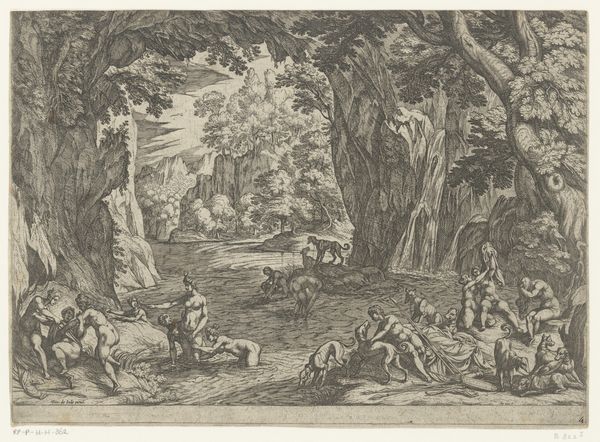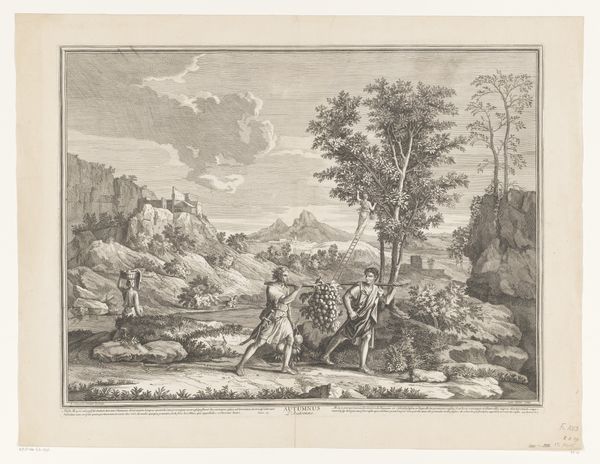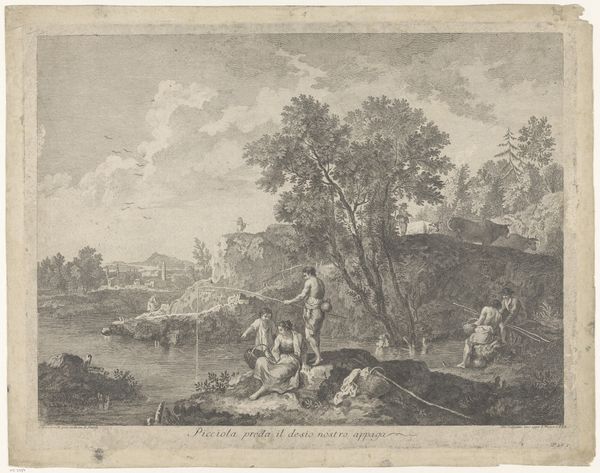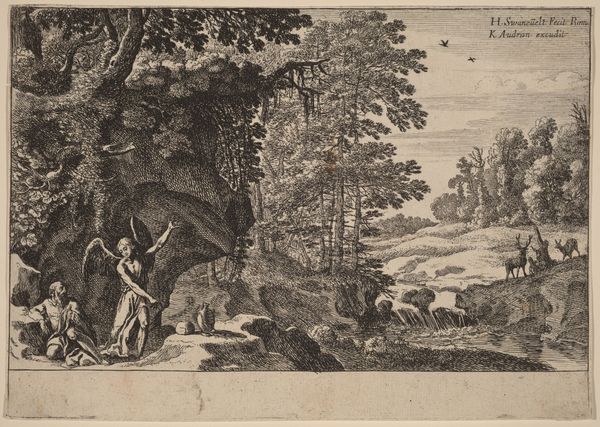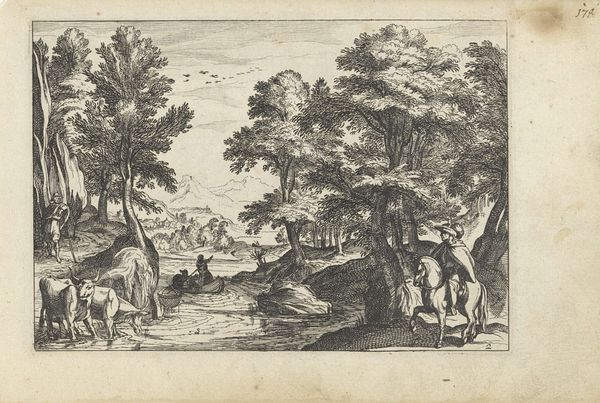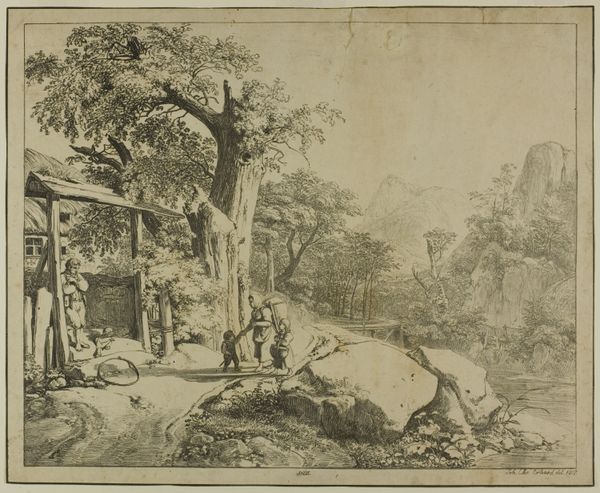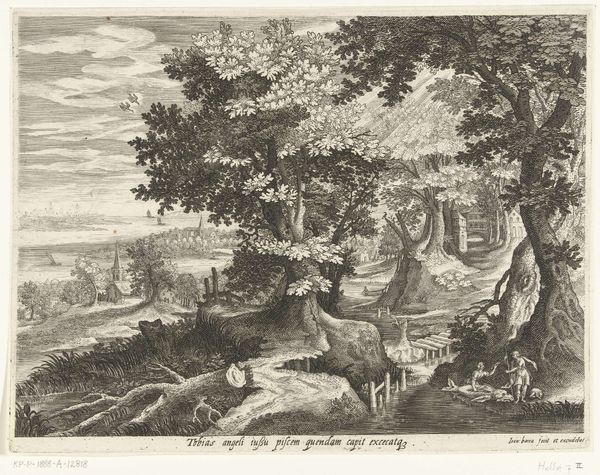
print, engraving
#
baroque
# print
#
old engraving style
#
landscape
#
figuration
#
history-painting
#
engraving
Dimensions: height 379 mm, width 516 mm
Copyright: Rijks Museum: Open Domain
Editor: Here we have Guillaume Chasteau’s "The Finding of Moses," an engraving made sometime between 1645 and 1683. The detail is astonishing. I’m struck by how this biblical scene is set within such an elaborate landscape. How should we interpret it? Curator: Consider the socio-economic context of printmaking at that time. Engravings like this were not merely artistic expressions, but commodities produced within a complex system. Editor: Could you elaborate? Curator: The availability of paper, the engraver’s skill, the printing press, and distribution networks all contributed to the work’s existence. How does understanding this influence our reading of the piece, particularly the depiction of luxury, and the clear class divides depicted within it? Editor: So you’re suggesting that the artwork's value extends beyond just the artistic interpretation, into how its creation and consumption reflect broader societal structures? Curator: Precisely. Notice how Chasteau emphasizes not only the biblical narrative, but the tools and process that allowed for its dissemination to a wider public, for whom consumption was equally significant as the artistic mastery. This commodification changed both how art was conceived and by whom. What was the impact of printmaking on artistic skill, labor, and dissemination of ideas during that time? Editor: That’s a fresh perspective. I’d always viewed art from a more purely aesthetic standpoint. I guess focusing on the materiality gives you a whole new perspective. Curator: It transforms our understanding of both art history and the social conditions it reflects. We realize it is all about labour, value and making something available and seen. Editor: That gives me a lot to think about. I am very appreciative.
Comments
No comments
Be the first to comment and join the conversation on the ultimate creative platform.

